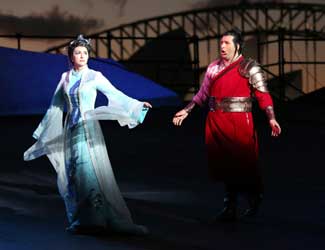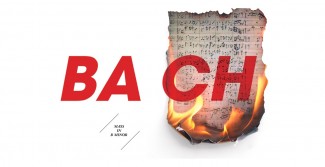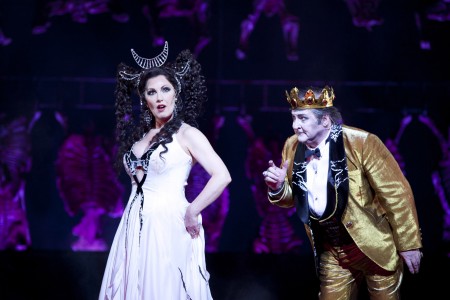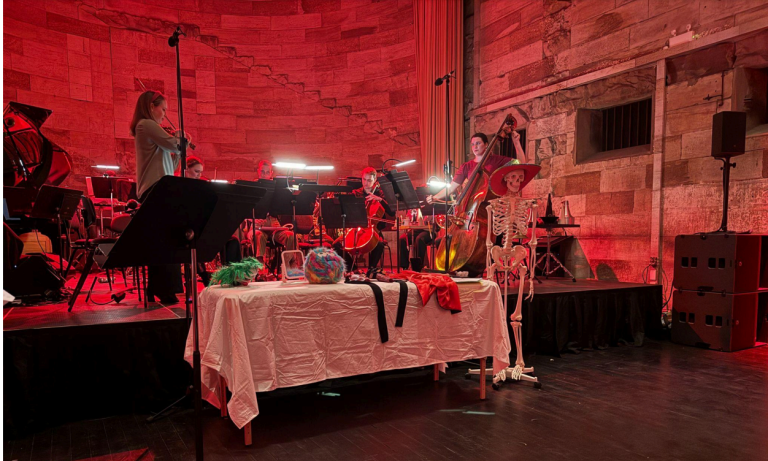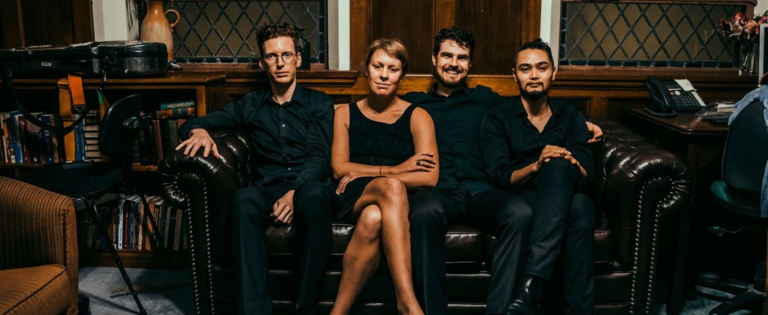Opera Review: Turandot/ Opera Australia/ Handa Opera On Sydney Harbour
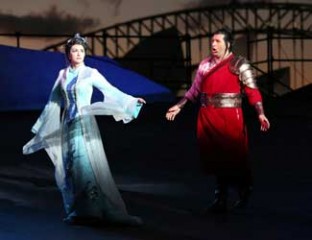
Superlative singing, sensitive staging and exquisite styling infused with the themes of Imperial China have made Turandot on Sydney Harbour arguably the most enjoyable of the productions to date.
The co-production between Opera Australia and Handa Opera on Sydney Harbour (HOSH) opened in Sydney last week under crystal clear skies and temperate breezes. (The first dress rehearsal was a rain-sodden affair. Kudos to the team for battling through).
Turandot was Puccini’s final work, based on a fiaba (fairy tale) by the Italian 18th century playwright, Carlo Gozzi. Puccini died in November 1924, leaving the opera to be completed by composer and pianist Franco Alfani. The final composite premiered in 1926 at La Scala, conducted by Toscanini.
For HOSH 2016, the performances from the principals were outstanding. Riccardo Massi gave a towering (pardon the pun) performance as Calaf. His voice is too fine to be amplified, yet in the open-air context requires enhancement. Despite the lack of intimacy in the venue he conveyed deep and changing emotions, especially palpable during in the riddle scene, as first perplexity, then hopelessness and finally triumph crossed his face, working through Turandot’s punishing challenges. One has to feel some sympathy for him as his moment of glory at the end of Nessun dorma was upstaged by the obligatory fireworks display – even if fireworks were invented in China. Calaf’s other aria Non piangere Liù though only slightly less heroic and passionate, is unfairly eclipsed by its more showy stablemates. It is another opportunity for the tenor to shine and Massi’s rendition was poignant and powerful.
Dragana Radakovic as Turandot was the personification of touch-me-not frigidity. A fine powerhouse dramatic soprano she beautifully portrayed the metamorphosis of the ice princess from rage and bitterness in In questa reggio to trepidation and vulnerability as Calaf’s kiss in the well-matched final love duet, Pincipessa di morte, awakened more visceral sensations. (Incidentally this is the point at which Franco Alfano’s completion of the opera kicks after Puccini’s untimely death).
Hyeseoung Kwon brings a wealth of experience to her captive and captivating role as Liù, losing nothing of the freshness, the pathos and the steely determination born of her love for Calaf. Her voice was overamplified but this is a part she has truly made her own.
The three masks, Ping, Pang and Pong, were eventually included in the opera by Puccini after an initial plan to omit them, saying ” by retaining them with discretion we ….have an Italian element which, in the midst of so much Chinese mannerism … would introduce a touch of our life and, above all, of sincerity”. Luke Gabbedy as Ping, Benjamin Rasheed as Pang and John Longmuir as Pong proved adept at their roles, providing an important commentary and a glimpse of Puccini’s ‘sincerity’ as they dream of simpler lives. They effectively propel the narrative with their macabre clowning and impeccable timing.
Underpinning these stellar performances were the elegant designs by Dan Potra, lighting by Scott Zielinski, and Chen Shi – Zheng’s graceful choreography and overall direction. The stage was dominated by the horizontal lines of the monumental dragon and its body on one side and the vertiginous, sky-skimming pagoda, its counterfoil across the stage. Yet, this production was characterised by a sense of proportion. There was an integrity in the aesthetic. There were no kooky costumes, the stage was uncluttered; the choreography and costumes felt real, affirming Chen Shi-Zheng’s programme notes that “the use of Chinese elements, visual vocabulary and dance movements….give this production as sense of authenticity and weight…”. There was an ingenious use of the pagoda and the dragon’s tail to project exquisite images that underscored the drama.
The Australian Opera Chorus was, as always, versatile and supportive. They sang an especially beautifully floated chant Là, sui monti dell’est replacing the customary children’s chorus. Conductor Brian Castles-Onion who will conduct every performance this year, (and has done since the inception of HOSH) drew together the many reins of the live performance, setting a pace with the marvellous musicians of the Australian Opera and Ballet Orchestra, that was relatively fast but not rushed.
Turandot is a deeply engaging tale made all the more appealing by Puccini’s enchanting score and divine lyricism which exudes passion and poignancy without mawkishness. Innovative and exotic, it incorporates Chinese folk tunes, modes, the pentatonic scale and other diversions from Western harmonic practices, for example spotlighting the xylophone, which all contribute to the charisma of his swansong.
Chen Shi-Zheng, his cast and creatives have created a beautiful product, but be prepared for the heavy editing, amplification and the possibility that the bells and whistles might just out-dazzle the singers.
Shamistha de Soysa for SoundsLikeSydney©

